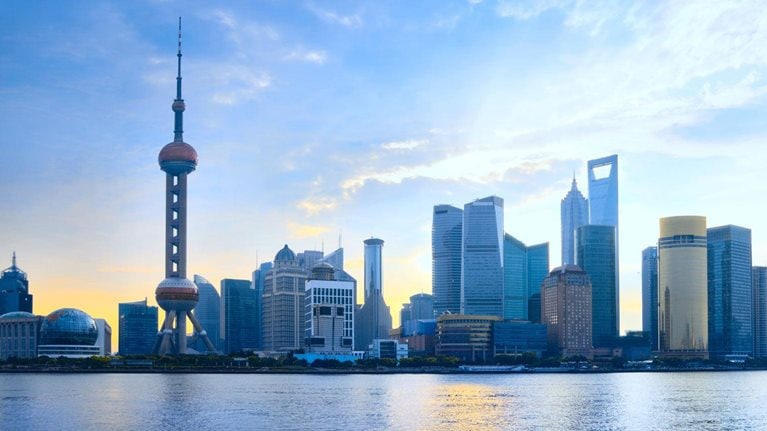China and India are in the vanguard of a wave of urban expansion that is driving the renaissance of Asia toward the global prominence the region had before the European and North American Industrial Revolution. By 2025, nearly 2.5 billion Asians will live in cities, accounting for almost 54 percent of the world’s urban population. India and China alone will account for more than 62 percent of Asian urban population growth and 40 percent of global urban population growth between 2005 and 2025.
In 1950, India was a more urban nation than China (17 percent of the population lived in cities compared with China's 13 percent). But from 1950 to 2005, China urbanized far more rapidly than India to an urbanization rate of 41 percent compared with 29 percent in India. New research from the McKinsey Global Institute expects this pattern to continue, with China forecast to add 400 million to its urban population, which will account for 64 percent of the total population by 2025, and India to add 215 million to its cities whose populations will account for 38 percent of the total in 2025.
Never before in history have two of the largest nations in terms of population urbanized at the same time—and at such pace. This process will drive fundamental shifts in both countries that will have significant consequences for the world economy and offer exciting new opportunities for investors.
In India, urban per capita GDP will grow at a rate of 6 percent a year between 2005 and 2025, while China will see a growth of 7.3 percent. The number of urban households with true discretionary spending power in India could increase sevenfold to 89 million households in 2025. In China, there are 55 million middle-class households today. That number could more than quadruple to nearly 280 million in 2025 to represent more than three-quarters of all China's urban households. For businesses, the significant increase in per capita urban incomes and middle-income households offers the potential of vibrant new markets to serve.
So what markets are likely to benefit the most from these trends? In India, by 2025, the largest markets will be transportation and communication, food, and health care followed by housing and utilities, recreation, and education. Even India’s slower-growing spending categories will represent significant opportunities for businesses because these markets will still be growing rapidly in comparison with their counterparts in other parts of the world. In China’s cities today, the fastest-growing categories are likely to be transportation and communication, housing and utilities, personal products, health care, and recreation and education. In addition, in both China and India, urban infrastructure markets will be massive. For example, between 2005 and 2025, India will need to add between 700 million and 900 million square meters of floor space a year; in China, the required numbers could be between 1,600 million and 1,900 million square meters. During the same period, India will need to add at least 350 to 400 kilometers of metro rail and subways annually, while the equivalent number in China will be closer to 1,000 kilometers.
There is little doubt about the scale of the new markets in India and China unleashed by the pace and scale of their urbanization. But businesses still need to be able to serve these markets in practical terms. The way cities are run—and the productivity that results—is a major factor for companies. Here, China is in much better shape than India is. While India has barely paid attention to its urban transformation, China has developed a set of internally consistent practices across every element of the urbanization operating model: funding, governance, planning, sectorial policies, and shape. India has underinvested in its cities; China has invested ahead of demand and given its cities the freedom to raise substantial investment resources by monetizing land assets and retaining a 25 percent share of value-added taxes. While India spends $17 per capita in capital investments in urban infrastructure annually, China spends $116. Indian cities have devolved little real power and accountability to its cities; but China's major cities enjoy the same status as provinces and have powerful and empowered political appointees as mayors. While India's urban planning system has failed to address competing demands for space, China has a mature urban planning regime that emphasizes the systematic development of run-down areas consistent with long-range plans for land use, housing, and transportation.
The starkest contrast between the two countries is that China has embraced and shaped urbanization while India is still waking up to its urban reality and the opportunities that its cities offer for economic and social transformation.
However, if India fixes its urban operating model, it has the potential to reap a demographic dividend from the increase in working-age population of around 250 million expected in the next decade. This demographic dividend is even larger than that in China, as China is aging rapidly. By 2025, nearly 28 percent of China's population will be aged 55 or older compared with only 16 percent in India, whose population profile is much more youthful. If India optimizes the productivity of its cities and maximizes their generation of GDP, the economy could add more than 170 million urban workers to its labor force between 2005 and 2025 compared with 50 million in China over the same period. The stakes are high.
Richard Dobbs is a director of MGI and a director of McKinsey based in Seoul. Shirish Sankhe is a director of McKinsey based in Mumbai.
This article originally ran in The Financial Times.


